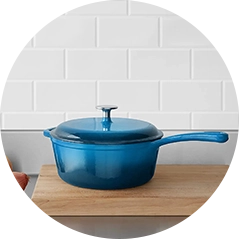
Essential Guide to Cast Iron Cookware for Every Culinary Enthusiast
The Timeless Appeal of Cast Iron Cookware
Cast iron cookware has long been celebrated for its durability, versatility, and superior heat retention. A staple in kitchens across the world, this remarkable collection of cookware not only enhances culinary experiences but also embodies a tradition that has been cherished for centuries. From skillets and Dutch ovens to cookware sets, cast iron pieces offer an array of benefits that make them a must-have for every home chef.
History and Tradition
The history of cast iron cookware dates back to ancient China, where craftsmen began casting iron into pots and pans. However, it was in Europe during the 18th century that the use of cast iron in cooking gained significant popularity. The durable nature of cast iron made it an ideal material for creating cookware that could withstand the high temperatures required for various cooking techniques, such as frying, baking, and braising. As culinary practices evolved, so too did the design and functionality of cast iron cookware. Today’s collections honor this rich legacy while incorporating modern innovations.
Exceptional Heat Retention and Distribution
One of the primary advantages of cast iron cookware is its outstanding heat retention and distribution properties. When properly seasoned, cast iron develops a natural non-stick surface that not only allows for easy food release but also ensures even cooking. This makes it particularly suitable for tasks like searing meat, frying, or baking, where precise temperature control is crucial. Whether you’re making cornbread, sautéing vegetables, or slow-cooking stews, cast iron cookware excels at creating deliciously rich flavors.
Versatility in Cooking Methods
Cast iron cookware is remarkably versatile, suitable for use on various heat sources. From stovetops to ovens, grills, and even campfires, cast iron pieces can handle it all. This adaptability allows chefs to experiment with different cooking methods, such as stovetop searing followed by oven baking, all in one pan. Imagine starting a hearty casserole on the stove and finishing it in the oven, or baking a perfect cake in a cast iron skillet. The possibilities are endless!
cast iron cookware collection

Moreover, cast iron cookware can enhance the presentation of dishes. Serving directly from a beautiful cast iron skillet or Dutch oven adds a rustic charm to any meal. The iconic dark, seasoned surface creates an inviting aesthetic that is sure to impress guests.
Care and Maintenance
While cast iron cookware is incredibly durable, it does require some care to maintain its quality. Regular seasoning—a process of applying oil and baking the cookware—helps develop its non-stick surface and prevents rust. Cleaning should be done with minimal soap and a gentle scrub to avoid stripping away the seasoning. With proper care, cast iron cookware can last for generations, often becoming a cherished family heirloom passed down through the years.
Eco-Friendly Choice
In an era where sustainability is increasingly important, cast iron cookware stands out as an eco-friendly choice. Unlike many modern non-stick products, cast iron is made from durable materials that do not warp or degrade over time. Additionally, its longevity reduces the need for frequent replacements, minimizing waste. Choosing cast iron supports a more sustainable kitchen lifestyle while still delivering high performance.
Conclusion
In summary, a cast iron cookware collection is an invaluable asset for any kitchen. Its historical significance, exceptional cooking properties, versatile use, and eco-friendliness make it a wise investment for novice cooks and seasoned chefs alike. By embracing the tradition of cast iron cooking, home chefs can elevate their culinary adventures and create delicious meals that bring family and friends together. So whether you're looking for a skillet to perfect your frying technique, a Dutch oven for cozy stews, or a versatile cooking set, consider adding cast iron cookware to your kitchen arsenal—where timeless appeal meets modern-day culinary dreams.
-
Season Cast Iron Perfectly with GPT-4 Turbo TipsNewsAug.01,2025
-
High Quality Cast Iron Cookware - Baixiang County Zhongda MachineryNewsAug.01,2025
-
Premium Cast Iron Pan: Durable & Perfect HeatNewsAug.01,2025
-
High Quality Kitchen Durable Black Round Cast Iron Cookware Pancake Crepe Pan-Baixiang County Zhongda Machinery Manufacturing Co., Ltd.NewsAug.01,2025
-
Cast Iron Cookware - Baixiang County Zhongda Machinery | Nonstick, Heat ResistanceNewsAug.01,2025
-
High Quality Kitchen Durable Black Round Cast Iron Cookware - Baixiang County Zhongda Machinery | Non-Stick, Heat Retention, DurableNewsJul.31,2025


